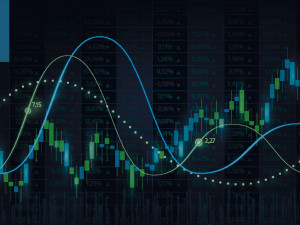
Sterling ending Q1 on a high
Morning mid-market rates – The majors
March 26th: Highlights
- Consolidation likely as lack of new factors limits upside potential
- Dollar lower on trade war concerns
- Euro remains range bound
Brexit overshadows Sterling strength
The optimism that surrounds the markets view of a further rate hike as soon as May underpins the currency but with inflation now at 2.7% and the effect of the “referendum collapse” now removed from the calculations, it is highly likely that it will fall further this month.
Despite optimism engendered by yet another capitulation over Brexit with the agreement of the transition, the concerns remain over the major differences between the two sides the Irish border which has now become the pivotal issue.
The pound rose last week to a high of 1.4220 following the encouraging data releases but the market was disappointed that the MPC wasn’t more supportive of a May hike despite two votes for a hike at this meeting. Sterling has been gradually rising against the Euro since the first week of March, gaining 3.3%, making a high of 1.1527.
This week sees the release of growth data for the UK with a headline of 1.5% up from 1.4% expected. The risk is for a weaker number which could lead to a correction for the pound in a thin pre-holiday market.
Considering your next transfer? Log in to compare live quotes today.
Dollar index close to lows
Last week the index reached a low of 89.39, still well above the historical low of 88.25 seen last month. Even if President Trump is against a weak dollar, his policies are certainly one of the major factors in its current malaise.
The imposition of tariffs on goods imported from China has provided further ammunition to those who feel that the dollar has further downside potential. The threat of an escalating trade war has driven a bout of risk aversion as the CHF and JPY have gained due to their safe haven status in times of global concern.
This week, growth data is also released in the U.S., but this number has far greater significance than the GDP data does in the UK. Since the Fed is determined to tighten monetary policy but now has a more pragmatic chairman, data needs to support continued rate hikes.
Growth has been steady if unspectacular for the past year and a read of 2.6% for Q4 is the markets estimate. With the employment report due at the end of next week, the dollar will become data dependent as we enter the second quarter.
Euro staying out of the limelight
It doesn’t seem very long since I for one was forecasting the “end of the experiment”, as it was hard to imagine how a unified monetary policy for nineteen such diverse economies could possibly work. But by allowing the weaker economies time to grow by withstanding calls for tighter monetary policy and a tapering of the Asset Purchase Scheme.
At some point in the next year the Asset Purchase Scheme is going to be reduced and that will need to be very expertly managed as the return of such a large portfolio of bonds to the market will cause upheaval.
So far, the single currency is making serene progress. Part of Draghi’s policy is for the Euro to appreciate gradually. Any sudden rally could derail the fragile economies of the weaker Eurozone members as it will affect the competitiveness of their exports. The downside is of less concern since inflation is benign and unlikely to be affected by a weaker currency.
The Euro remains in a 1.2240/1.2520 range overall and last week it traded between 1.2238 and 1.2390.
Have a great day!

About Alan Hill
Alan has been involved in the FX market for more than 25 years and brings a wealth of experience to his content. His knowledge has been gained while trading through some of the most volatile periods of recent history. His commentary relies on an understanding of past events and how they will affect future market performance.”



